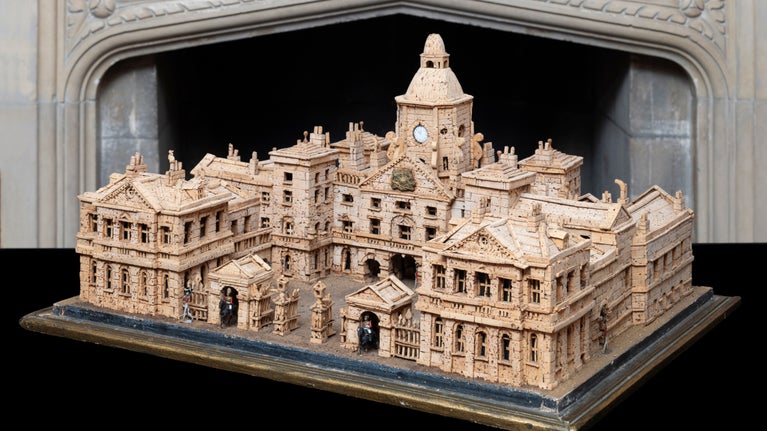
Art and collections
We care for one of the world's largest and most significant collections of art and heritage objects. Explore the highlights, our latest major exhibitions, curatorial research and more.

In the Western Church, Advent starts on the Sunday closest to the feast of St Andrew on 30 November and ends with Christmas Eve on 24 December. Learn about the history of Advent calendars and discover 24 festive objects from the collections in our care with our own Advent calendar.
Advent is a time of lights, decorations, parties and general merry-making in the countdown to Christmas. It's thought that the origin of Advent has been celebrated by Christians since at least the 5th century, if not before. Advent was originally a period of fasting, prayer and preparation between the feast of St Martin on 11 November and the feast of Christ’s birth on 25 December.
Today, many people celebrate Advent with a cardboard Advent calendar, with 24 doors that hide images, chocolates or other sweet treats, each marking the countdown from 1 December to Christmas Eve. Advent candles are also still used by some households and in places of worship, with a section of the candle burned for every day of Advent.
Like a number of Christmas traditions in the English speaking world, such as festive trees, the origins of these calendars seem to have emerged in 19th-century Germany, where many Protestants would burn a candle for each day of Advent.
The history of Advent calendars as we know them today gained popularity in Germany from around the turn of the 19th and 20th centuries. The most popular origin story today is that in the late 1800s, the mother of a German boy called Gerhardt Lang taped a sweet to a piece of cardboard for each day of advent.
As an adult, Lang set up a printing company with a friend called Reichhold and, inspired by his mother’s Advent treats, the pair printed the first Advent calendar in 1908. Although their business closed in the 1930s, the modern Advent calendar had caught the public's imagination and soon became a new Christmas tradition.
For the first days of our Advent calendar, we've pulled together some of the wintry highlights in the many landscape paintings we care for.
Father Christmas still visits many of the places in our care every Christmas. Discover some objects of the collection that might remind you of him, from antique sleighs to symbols of reindeer.
Christmas is the story of the conception and birth of Jesus. Here are works of art and objects in our collections that depict the nativity.
From holly to mistletoe, plants are used in many ways at Christmastime.
There are some creatures that we often think of at this time of year, especially if you celebrate Christmas dinner with the traditional turkey. But what about camels and goats? Discover the animals that hold festive traditions.
The gifts of the three kings are as well known as the nativity itself. But where you can find gold, frankincense and myrrh at our places?

We care for one of the world's largest and most significant collections of art and heritage objects. Explore the highlights, our latest major exhibitions, curatorial research and more.
From silver charms in Christmas puddings to early Advent calendars, learn more about the ways our Roman, Victorian and medieval ancestors prepared for the festive season.

Christmas carols are at the very heart of festive tradition. Many of the texts, tunes and conventions of today’s carols owe more to 19th and early 20th-century taste than they do to the medieval period.

From goldwork and gilding to goldsmithing and jewellery making, discover the ways in which gold has been used in the objects in our collections.

Wassailing is a Twelfth Night tradition with pagan roots, which aims to ward off bad spirits and ensure a good harvest the following season. Learn more about the tradition and its celebrations, which include music, song and dance.

Take a closer look at some of the Easter objects in our collections. From a religious holy day to a time for family traditions, discover the origins of Easter and the symbolic egg.
